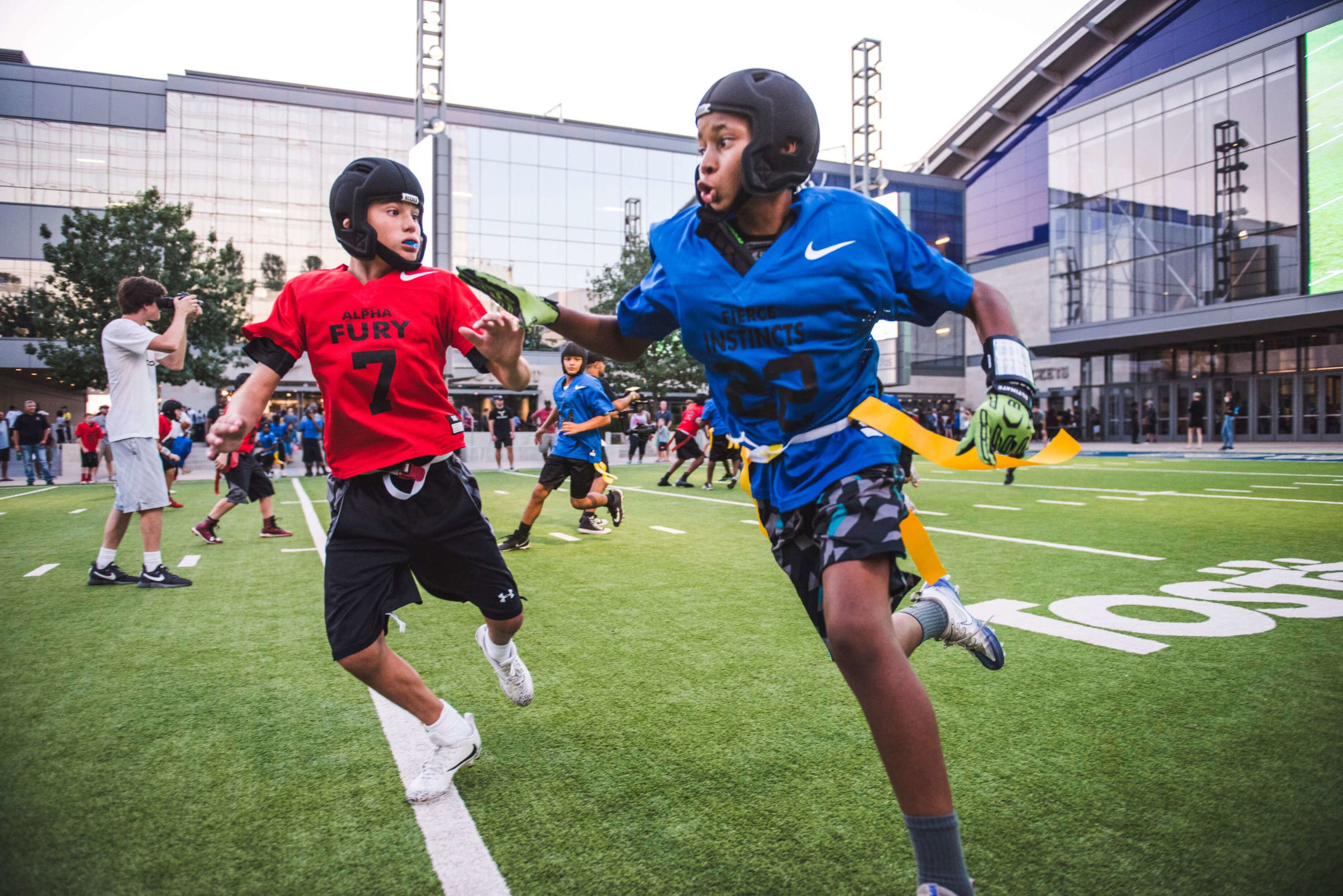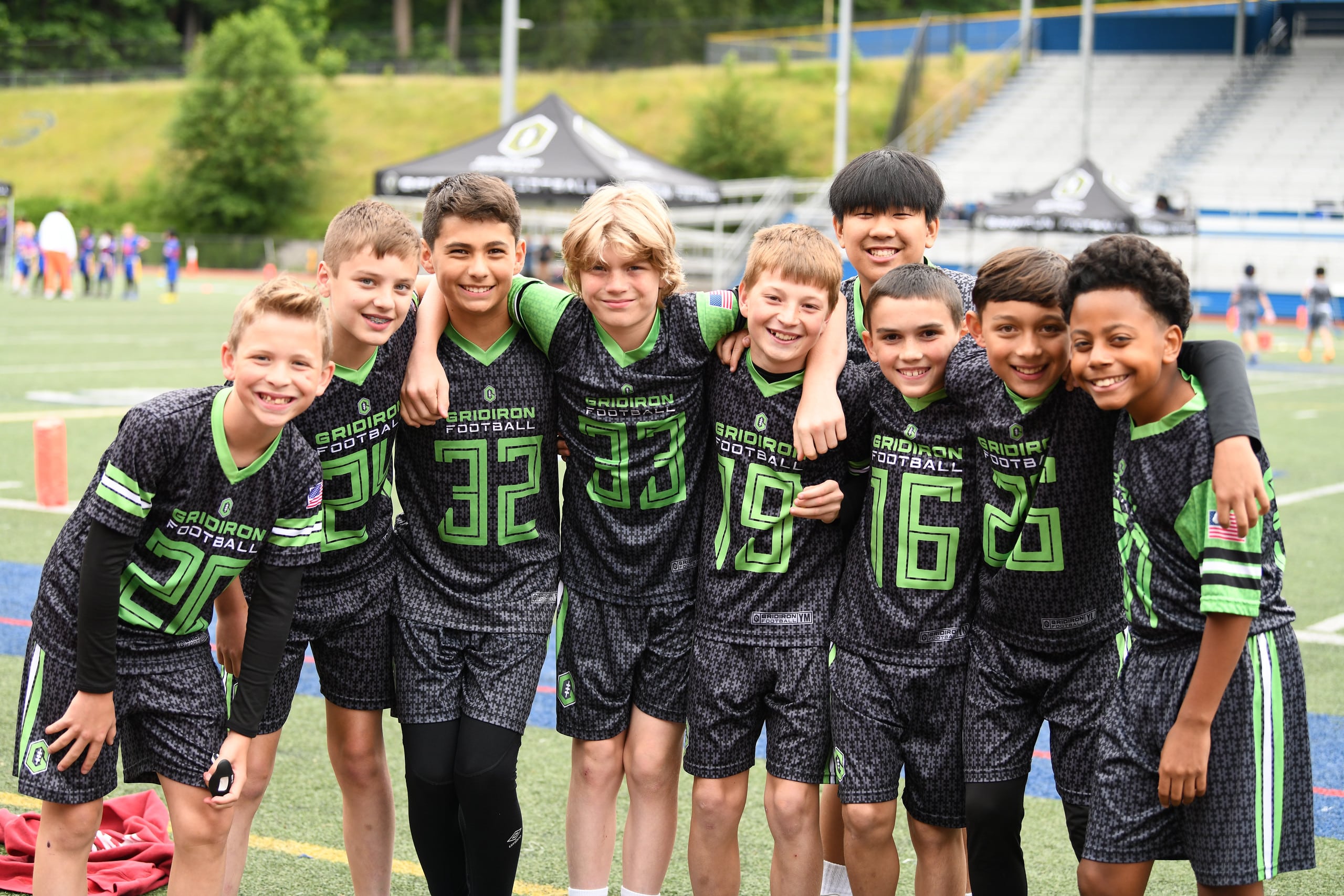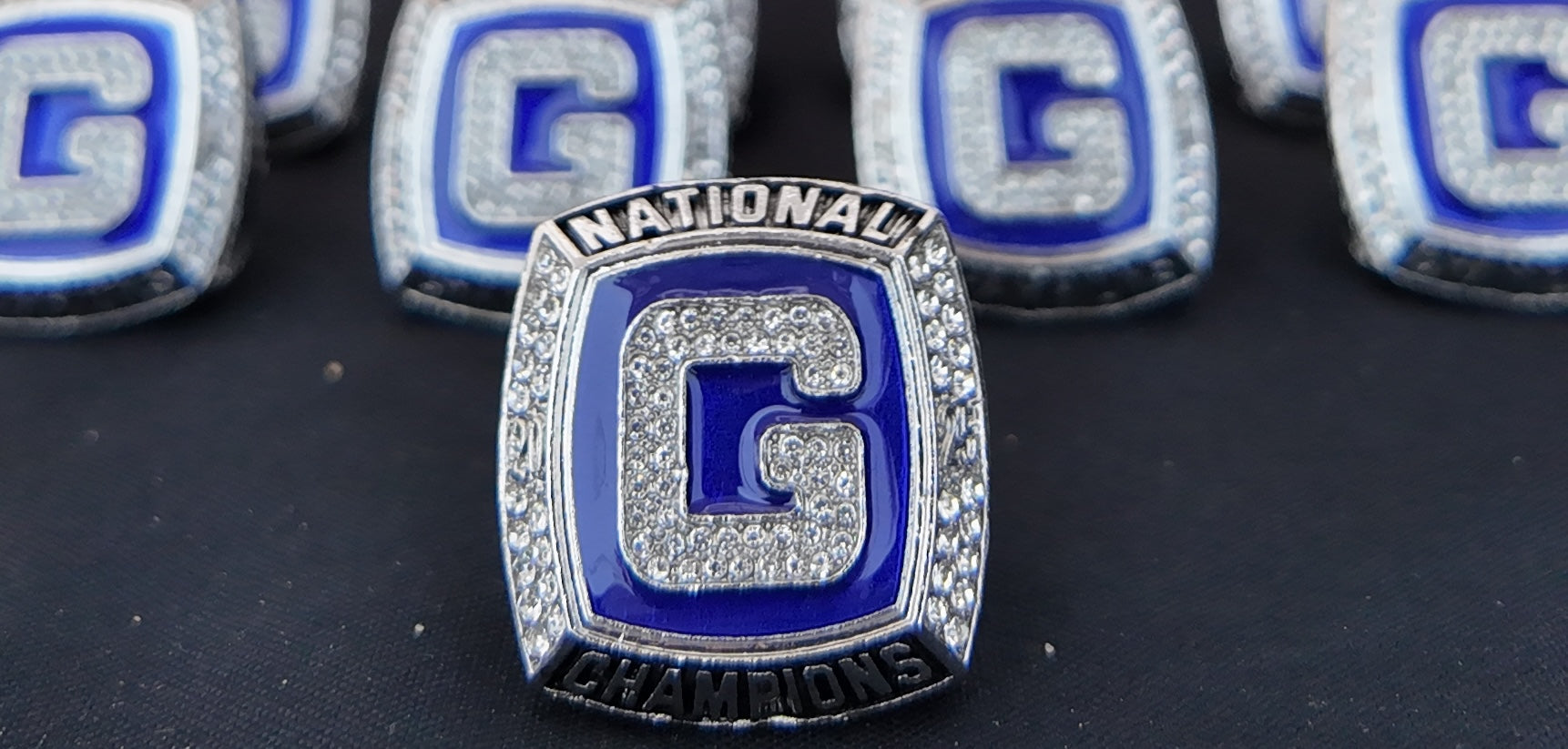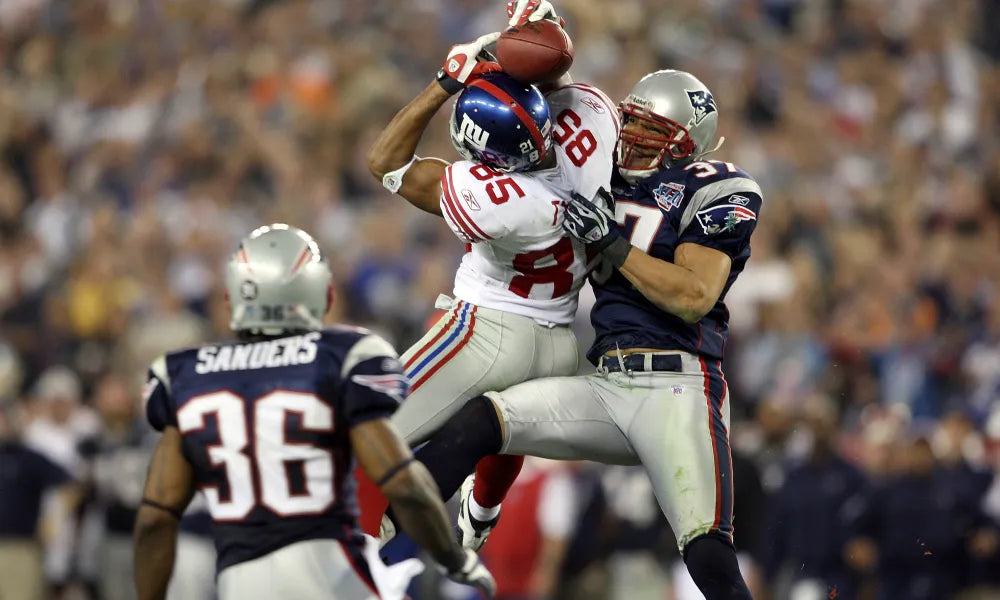It can be difficult to choose a sports program as a parent of young players- or as a kid with dreams of becoming an athlete. With numerous sports, leagues, clubs, and Play Styles available, the choices can seem endless- and selecting the right one for your player can seem daunting. Of course the biggest duty for any sports mom or dad is balancing your child’s safety with fun- and adding a dose of discipline and healthy competition along the way!
For football families, we’ve set out to break down the key differences between the 3 play styles offered here at Gridiron Football. This comparison guide will help you understand the main differences and similarities between Flag football, 7 on 7 (7v7) football, and Flex football. Use it to make a more informed choice when signing up your player next season!
What is a Play Style?
First, it’s important to know what we mean by “Play Style”. You are probably familiar with the differences between Tackle and Flag football- but did you know there are additional options as well? These different ways to play American football feature different numbers of players on the field, various gear requirements, and even different rule books! The overall focus changes as well, as some play styles are more focused on safety, skills development, or team cohesion. So when we say “play style,” we’re referring to a game play format such as flag, 7v7, flex, or tackle football.
Gridiron Playstyle Comparisons
| COMPARING PLAY STYLES* | ||||||
|---|---|---|---|---|---|---|
| Play Style | Ideal for | Players | Gear | Contact | Competitive | Focus |
| Flag (rec) | New & young players Ages 4-14 |
5 or 6 on field |
Flag belt | None | Less | Safety, Fun, Football Intro |
| Flag (comp) | Returning & young players Ages 6-14 |
5 or 6 on field |
Flag belt | None | Moderately | Safe intro to Comp. Football |
| 7 on 7 | Returning players Ages 8-18 |
7 on field |
Helmets; Softshell |
Limited; 2 hand touch |
Highly | Skill position development |
| Flex | Returning teams Ages 8-18 |
9 on field |
Helmets + Pads; Softshell |
2 hand touch + Blocking |
Highly | Skill development for whole team |
| TACKLE | Returning players Ages 8-18 |
11 on field |
Helmets + Pads | Tackle | Highly | Competition as a team |
* This table is intended to provide a general guideline; play style experience and requirements may vary by organization, league, and/or season.
A closer look: the differences
How are they similar?
- Safety: while each gameplay has a different level of contact, none of them involve tackling.
- No kicking position is used in any gameplay style.
- Coaching is the backbone of it all 3; making sure every kid gets to play and is improving at their level is the common goal of each play style.
Which playing style style is right for my child?
-
Flag
-
Recreational
- Boys and Girls learning Flag Football and seeking a safe and fun experience. For Players 4 to 12 years old.
- Competitive
- Boys and girls who know the game of flag football but are seeking some more competition.
-
Recreational
-
7v7
- Experienced Flag players seeking a higher level of competition
- A Player looking to work on timing with other highly skilled players
- Tackle players looking to stay sharp and improve their game in the off-seasons
- For Players 8 to 18 years old
-
Flex
- Tackle players looking for an off-season format to improve individually and as a team
- 7-on-7 players that are looking for a more fun and physical style of play
- Competitive Flag players that are ready to move into a more physical game play but not ready for tackle
- For Players 6 to 18 years old
Break each down into AGE, Experience, goals, etc. What do THEY want to get out of it?
If you are looking for a non competitive place for your child to have fun and get an introduction to Football, Flag football is the best way for them to learn the game in a safe and fun environment. Here, they can play with friends, and fall in love with the game.
If your child wants to grow as a player and develop their timing by getting reps in, then 7v7 is the perfect environment for them to sharpen their skills in an ultra competitive and fast paced style of play.
For those seeking a more complete training program that involves the whole team, Flex football offers the most complete training setting for players who want to improve their skill sets.
Final Overview
Flag




Share:
4 Things to Know About Football For Kids
A Message to Parents and Coaches